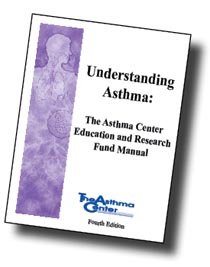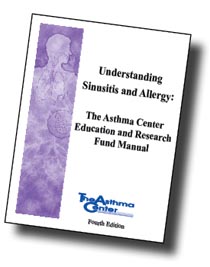Geriatric asthma
The most rapidly growing demographic group in the US is age 65 and above. Individuals in this age group have an increased chance of developing multiple medical conditions that cause asthma such as coughing, shortness of breath, wheezing and loss of exertional ability. The increased use of multiple medications and multiple medical problems leads to the need for careful examination of these issues in order to make the correct diagnosis. Unfortunately, asthma causing symptoms of coughing, wheezing, shortness of breath, chest discomfort and limitation of exertion are frequently misdiagnosed or under diagnosed in the elderly. One reason that asthma is under diagnosed in the elderly results from the fact that the symptoms typical of asthma are often the same symptoms associated with other medical problems frequently found in the elderly. Some elderly individuals also can have treatable asthma symptoms co-existing with other chronic diseases and the asthma symptoms are simply attributed to the wrong disease. That is, an elderly individual may have two diseases occurring simultaneously, each of which is contributing to the symptoms of shortness of breath, but only one disease is being treated. This situation usually leads to continuing symptoms while the treating physician feels there is nothing more that can be done.
Symptoms and Diagnosis
Individuals with a history of asthma earlier in life may have a recurrence of symptoms late in life following many symptoms free years. Others may experience symptoms for the first time as an elderly adult (adult onset asthma). Still others may have an onset of asthma related to a specific trigger such as allergy, gastrointestinal acid reflux (GERD), sinusitis, pulmonary infection, or exposure to a respiratory irritant.
Elderly individuals with asthma often have persistent or recurrent cough, shortness of breath on exertion (walking, shopping, any normal activities) or awaken at night due to respiratory symptoms. Wheezing may or may not be present. These symptoms are often not attributed to asthma in an elderly individual with other medical problems that can produce similar symptoms and therefore the appropriate treatment is often delayed until the correct diagnosis is made.
Elderly people often have a history of smoking and may have coexisting chronic obstructive pulmonary disease (COPD), and therefore the diagnosis of asthma may be delayed because symptoms are attributed to COPD. In addition, breathlessness may solely be attributed to the aging process, when it is actually a result of under treated asthma.
Other diseases to be considered when trying to diagnosis asthma in the elderly include: COPD, congestive heart failure (CHF), aspiration syndromes, lung cancer, interstitial pulmonary disease, sarcoidosis, bronchiectasis, pulmonary embolus, pulmonary hypertension, vocal cord dysfunction and other cardio/pulmonary diseases.
Chest x-rays or CT of the chest, complete pulmonary function testing, methacholine or exercise challenges, specific studies for CHF, and response to asthma medication can help differentiate asthma from other diseases producing similar symptoms.
Most asthmatic individuals will quickly show improvement and having some reversibility of their airway obstruction with asthma medications, thus supporting the diagnosis of asthma as a cause of their symptoms. On the other hand, CHF can cause symptoms similar to asthma including wheezing. In this case, an elevated blood test (BNP) associated with an enlarged heart, breath sounds of pulmonary edema, or swelling (edema) of the extremities helps support the diagnosis of CHF.
Symptoms of coughing and breathlessness may also be a sign of adverse effects of medication that often prescribed to the elderly such as angiotensin converting enzyme inhibitors (ACE inhibitors) which can cause a chronic cough or beta blockers which can induce bronchospasm in susceptible individuals.
Treatment
Once a diagnosis of asthma is made, great care needs to be taken in the choice of medications because of the increased susceptibility of the elderly to side effects, potential drug interactions with other medications, or asthma treatment having a negative effect on the other underlying diseases.
Since many elderly individuals are prescribed multiple medications, it is important to educate the patient about the proper use of medication with demonstration (for example, proper inhaler use), written patient instructions, discussion of the need for compliance, and screening the patient medication and medical conditions for conflicts and contraindications.
Other goals include instruction for smoking cessation (when appropriate), environmental controls, emergency plan and medication back up for flares of asthma (nebulizer/oral corticosteroids) and prevention with up to date immunizations for influenza and pneumonia.
The following medication classes may be used to treat asthma in the elderly:
Sympathomimetics stimulate biochemical changes in the airway which leads to bronchodilation and quick relief of asthma symptoms. Selective beta agonists, especially albuterol (Xopenex) for short term relief of acute asthma symptoms, often lessen the side effects of agitation, tremor, tachycardia, and insomnia common to this class of medication. Some of the long acting bronchodilators (LABD) such as Serevent (salmeterol), and Foradil (formoterol) are available alone or combined with inhaled corticosteroids (for example, Advair, Symbicort). These LABDs have proven to be effective and safe in most of the elderly, and are particularly helpful to asthmatic individuals with nocturnal symptoms. However, in a subgroup of these individuals that also suffer from severe heart diseases, especially in African Americans, it might be prudent to avoid LABD medications since there have been associated statistical reports of deaths while using these medications.
Inhaled corticosteroids are often the treatment of choice because of their anti-inflammatory activity and low incidence of side effects in the elderly. Still the elderly need to be carefully monitored for potential side effects including oral candidiasis, osteoporosis and glaucoma. As with any inhaled technique is important that the individual consider using a metered dose inhaler with a spacer vs. a dry powdered breath activated inhaler (DPI). The breath activated DPI needs less coordination for optimal deliver. The presence of dentures may increase the incidence of oral candidiasis, making vigorous oral rinsing following use of inhaled corticosteroids particularly helpful.
Leukotriene modifiers (Accolate, Singulair, Zyflo) are also helpful in treating asthma in the elderly. However, since these medications are metabolized through the liver, liver function tests need to be monitored. Review of medications for drug interaction must also be monitored with great care.
Theophylline used in low doses is making a come back in treating the elderly with asthma. Maintenance of lower blood level (5 -10 micrograms/ml) seems to be associated with clinical improvement with few side effects. Monitoring of blood levels on a regular basis as well as monitoring of medication is essential in the elderly, since this medication is extremely toxic should high levels occur.
Use of nebulized bronchodilators (Albuterol, Xopenex), corticosteroids (Pulmicort respules, budesonide) and anticholinergics (Atrovent, ipratropium bromide) can be very effective in controlling symptoms when standard delivery systems are ineffective, and may provide an ease of use in those individuals who find difficulty using an MDI or DPI.
Oral corticosteroids such as prednisone, when used during a flare for short periods of time, can prevent emergency room visits and hospitalization when under the supervision of and coordination with the treating physicians.
The elderly often need to be reinstructed on the use of medications with each office visit, and receive a written list of the prescribed medication and their use in order to avoid confusion. In addition the physician should review all medications at each office visit searching for drug interactions and contraindications in any new diagnosis. The physician also should review the potential for triggers of asthma including sinusitis, GERD, medications (beta blockers) and/or the development of symptoms resulting from CHF, COPD, infection, vocal cord dysfunction, and ascertain any new pulmonary disease since the risks of such an occurrence are higher in the elderly.
The goals of treatment for elderly asthmatic individuals are directed towards improving their quality of life through optimum treatment which should prevent or diminish exacerbation of asthma, controlling coughing, decreasing awakenings at night, diminishing breathlessness, improving activity level, while carefully selecting and adjusting asthma medications to minimize side effects and drug interaction.



